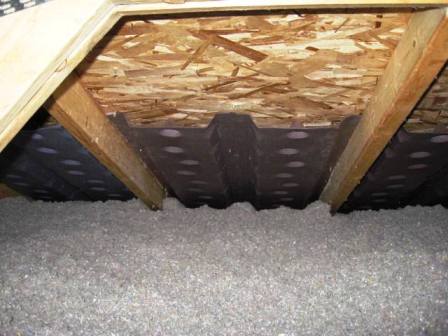The house I'm building has cathedral ceilings. Rafters are 2X10s with OSB decking on top, then felt paper and shingles. There is no "attic space" or anything that will be enclosed space between the living area and the roof.
Can I pack the entire 2X10 full of insulation (foam, or densepack cellulose) without leaving an airspace?? I haven't finished the roofing yet, so I can put a ridge vent in if necessary, but there won't be anything to vent.
I guess I don't understand the reason to have a vent (ridge vent, soffit vents, etc.) if there isn't any space to vent....so why create a space between the roof decking and the insulation??
I have a "whole house" fan through the roof to help keep moisture out.
I understand that an air space/vent helps keep the roofing "cooler", but that it only cools it about 6%. A lighter colored shingle cools it 10%, so I don't see the advantage if that is the only reason to have it vented.
Please enlighten me. My instinct is just to pack it full and close off the ridge vent and eaves.
Thanks!
CC
Can I pack the entire 2X10 full of insulation (foam, or densepack cellulose) without leaving an airspace?? I haven't finished the roofing yet, so I can put a ridge vent in if necessary, but there won't be anything to vent.
I guess I don't understand the reason to have a vent (ridge vent, soffit vents, etc.) if there isn't any space to vent....so why create a space between the roof decking and the insulation??
I have a "whole house" fan through the roof to help keep moisture out.
I understand that an air space/vent helps keep the roofing "cooler", but that it only cools it about 6%. A lighter colored shingle cools it 10%, so I don't see the advantage if that is the only reason to have it vented.
Please enlighten me. My instinct is just to pack it full and close off the ridge vent and eaves.
Thanks!
CC





